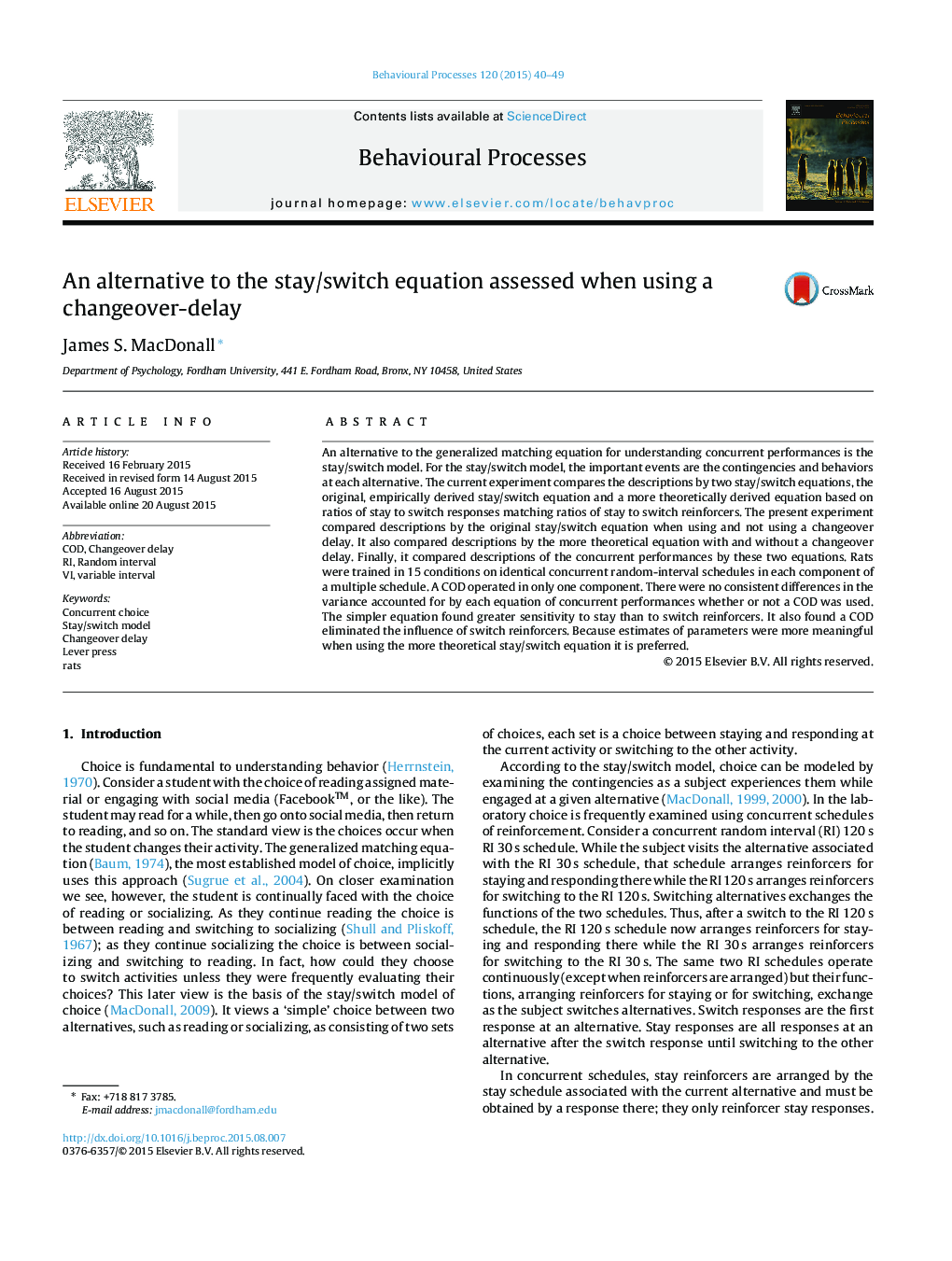| Article ID | Journal | Published Year | Pages | File Type |
|---|---|---|---|---|
| 2426491 | Behavioural Processes | 2015 | 10 Pages |
•We compared two equations, based on the stay/switch model.•Rats trained on concurrent schedules using a changeover delay, or not using one.•Both equations described results from both changeover delay conditions.•The simpler equation’s parameters found behavior more sensitive to stay reinforcers.•Using a changeover delay eliminated the influence of switch reinforcers.
An alternative to the generalized matching equation for understanding concurrent performances is the stay/switch model. For the stay/switch model, the important events are the contingencies and behaviors at each alternative. The current experiment compares the descriptions by two stay/switch equations, the original, empirically derived stay/switch equation and a more theoretically derived equation based on ratios of stay to switch responses matching ratios of stay to switch reinforcers. The present experiment compared descriptions by the original stay/switch equation when using and not using a changeover delay. It also compared descriptions by the more theoretical equation with and without a changeover delay. Finally, it compared descriptions of the concurrent performances by these two equations. Rats were trained in 15 conditions on identical concurrent random-interval schedules in each component of a multiple schedule. A COD operated in only one component. There were no consistent differences in the variance accounted for by each equation of concurrent performances whether or not a COD was used. The simpler equation found greater sensitivity to stay than to switch reinforcers. It also found a COD eliminated the influence of switch reinforcers. Because estimates of parameters were more meaningful when using the more theoretical stay/switch equation it is preferred.
